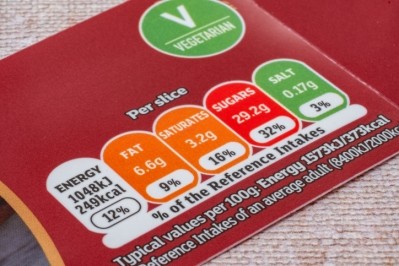How gut health and GLP-1s are reshaping food innovation

Consumers are redefining “healthy” with a focus on gut health and macronutrients. High protein options rank high for consumers, followed by low sugar and fiber which play a role in digestion and overall well-being,” Jonathan Clinthorne, senior director of nutrition, Simply Good Foods Company, told FoodNavigator-USA. Simply Good Foods Company makes Quest and Atkins nutrition food products.
This shift in priorities presents a challenge or opportunity, depending on where a company stands, to develop health-focused foods that cater to evolving taste preference and the prevalent use of GLP-1s for weight management and diabetes. While individuals on GLP-1s lose “15 to upwards of 25% of their body weight over about 60 weeks,” their weight will plateau after the 60-week period. Clinthorne said.
The clinical data around these drugs “are very strong,” and results show a difference in taste preferences, he said.
“Genetic expression in taste buds is changing and that influences certain regions of the brain when people are … on semaglutide, which is Ozempic and Wevogy,” and data shows a decrease in preference for savory or fattier foods, with sweet preferences declining “a little bit, but not as much,” Clinthorne explained.
Balancing caloric intake with diet quality for GLP-1 users
For consumers taking GLP-1s, diet quality is essential because of the lower caloric intake, which is between 1,200 – 1,400 calories a day.
For Atkins and Quest products, Clinthorne highlighted that developing meal plans, particularly for Atkins, that contain a complete nutrient diet is a challenge. The Atkins diet restricts low carbohydrates and emphasizes protein and fat intake for satiety and burning energy, while gradually reintroducing carbohydrates in a phased stage. The diet also focuses on net carbs, which is total carbs minus fiber and sugar alcohols, since the latter are not fully absorbed by the body.
“We are trying to model this internally for just meal plans, even for the Atkins diet, because it is really hard to get all your essential nutrients with that low caloric intake. So, obviously prioritizing foods that are going to have a lot of nutrient density, like vegetables, is going to be really important for this consumer,” he said.
This shift in diet has major implications for the 15-20% of US consumers projected to be on GLP-1 medications by 2030. As Clinthorne explained, these individuals will need to adjust their shopping habits to "seek out certain foods," particularly those high in protein. After all, "when you are not eating as much … what you are eating really matters."
Clinthorne pointed to dairy and animal proteins as examples of high-quality proteins. These proteins digest more slowly, allowing the body to use these amino acids more efficiently.
Closing the fiber gap
Gastrointestinal issues, like constipation, nausea, diarrhea and vomiting, are a common side effect with GLP-1s, which will also impact consumers’ diets. Constipation continues throughout the course of treatment, highlighting the growing need for gut-friendly ingredients and fiber, Clinthorne noted.
However, the American diet is “not particularly high in fiber,” with the average fiber consumption being 5 grams for every 1,000 calories, a staggering difference from the recommended average of 14 grams per 1,000 calories, Clinthorne said.
Quest’s protein bars contain dairy proteins, “which ae complete proteins that also have a lot of branched chain amino acids,” Clinthorne explained.” Whereas Atkins uses a combination of “some dairy proteins and … plant proteins like soy,” which is the only complete plant protein.”
However, more education around protein metabolism for consumers is needed, Clinthorne emphasized.
“I do not know if consumers have really grasped the complexity of protein metabolism and understanding that some proteins not only are they complete, but they are also very high quality, whereas some are complete but lower quality,” he said.


















